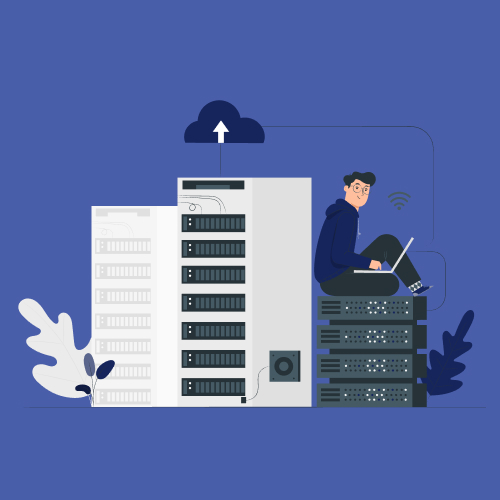Choosing between a cloud HRIS and an on-premise HRIS shapes operational agility, cost structure, and security posture.
A cloud HRIS delivers core HR capabilities, such as employee data management, benefits administration, and payroll processing, via a SaaS model. It eliminates large upfront investments in servers and reduces ongoing IT overhead.
In contrast, an on-premise HRIS installs software on local servers, giving organisations complete control over data and infrastructure.
Deployment model impacts total cost of ownership, speed of innovation, and compliance. Cloud HRIS with automatic updates ensures continuous feature delivery and streamlined compliance, while on-premise HRIS depends on manual maintenance and upgrade cycles.
IT teams evaluating HRIS hosting models must weigh scalability, integration with existing HR software and HCM software strategies against governance and data residency considerations.
Medium to large enterprises, especially those with distributed workforces, derive significant value from a centralised system that scales with business growth.
A robust cloud HRIS reduces time-to-value through rapid onboarding and pre-configured workflows, while an on-premise model can involve lengthy implementation, customisation, and large capital expenditure.
By the end of this guide, HR leaders and IT decision-makers will have a data-driven framework to select the right deployment model and leverage MiHCM’s suite for intelligent workforce management.
This guide compares cloud and on-premise options across cost, security, deployment speed, and innovation—and introduces MiHCM’s flexible hosting solutions. Readers can also refer to our comprehensive HRIS guide for a deeper dive into foundational concepts.
TL;DR: Key takeaways
A brief overview of the key differences between cloud HRIS and on-premise HRIS, and how MiHCM delivers advanced hosting models:
- Scalability & IT Overhead: Cloud HRIS enables elastic resource allocation and minimal infrastructure management, reducing operational burden.
- Cost Structure: Subscription-based pricing in cloud HRIS contrasts with high upfront hardware and licensing costs in an on-premise HRIS.
- Innovation & Updates: Automatic upgrades in cloud HRIS ensure continuous feature delivery; on-premise relies on planned maintenance windows.
- Data Control & Compliance: On-premise HRIS grants direct control over data residency; cloud HRIS maintains compliance through built-in audits and encryption.
- MiHCM Flexibility: Offers public, private, hybrid, and on-premise hosting with embedded analytics, AI-driven SmartAssist, and local labour law compliance.
What is cloud HRIS?
A cloud HRIS is a web-based human resources information system delivered as a SaaS model. It consolidates employee data management, benefits administration, payroll processing, time and attendance, and reporting into a centralised platform.
By abstracting infrastructure management, a cloud HRIS allows HR teams to focus on strategic initiatives rather than maintenance. Integration with third-party HR software and HCM software extends core capabilities for talent acquisition, performance management, and workforce planning.
Core components of cloud HRIS
A modern cloud HRIS includes the following functional modules:
- Employee Data Management: Central repository for personal records, organisational hierarchies, and job profiles.
- Benefits Administration: Automated enrolment, eligibility tracking, and vendor integrations.
- Payroll & Tax Compliance: Real-time payroll calculations, tax filing, and global payroll management.
- Time & Attendance: Mobile attendance tracking, leave management, and geofencing for remote teams.
- Reporting & Analytics: Pre-built dashboards and ad-hoc reporting for workforce insights.
SaaS delivery and multi-tenancy
Using a multi-tenant cloud model, providers host multiple customers on shared infrastructure while maintaining logical data separation. SaaS delivery ensures:
- Automatic Updates: Seamless feature releases and security patches without downtime.
- Scalability: Elastic resource provisioning to accommodate seasonal peaks and headcount growth.
- Cost Efficiency: Shared operational costs, subscription-based pricing, and predictable budgeting.
- Rapid Deployment: Minimal on-site setup, enabling a faster time-to-value.
To explore technical architecture and advanced configurations, see our complete guide to cloud HRIS software.
On-premise HRIS overview
An on-premise HRIS is installed and maintained within an organisation’s own data centre. It provides direct control over hardware, software, and network configurations. This model was the predominant deployment for legacy HR systems and remains in use where data sovereignty and customisation are paramount.
In a traditional on-premise deployment, HR teams manage version upgrades and security patching, requiring dedicated IT staff. Custom modules or integrations with existing finance or CRM systems often demand specialised development and extended test cycles. While this model delivers robust control, it can elongate upgrade windows and inflate total cost of ownership.
Typical on-premise architecture
On-premise architecture typically consists of:
- Physical Servers: Dedicated database and application servers hosted in private data centres.
- Local Database: On-site SQL or Oracle databases housing employee records and transaction logs.
- Network Infrastructure: Firewalls, VPN gateways, and load balancers to secure internal access.
- Maintenance & Backups: Manual patch management, hardware refresh cycles, and off-site backup procedures.
Pros and cons
Organisations considering an on-premise HRIS must evaluate trade-offs:
- Pros: Direct control over data residency, customisation depth, and integration with internal systems.
- Pros: Predictable performance with dedicated resources and minimal dependency on internet connectivity.
- Cons: High upfront costs for hardware procurement, licensing, and infrastructure setup.
- Cons: Ongoing IT demands for system administration, security patches, and upgrade projects.
- Cons: Extended implementation timelines compared to cloud HRIS solutions.
Key differences: Cloud vs. on-premise HRIS
This comparison highlights critical distinctions between cloud and on-premise HRIS across deployment speed, update management, scalability, and customisation.
Deployment Speed & Update Cadence: A cloud HRIS leverages predefined modules and automated provisioning to accelerate go-live. IT teams access a managed environment, eliminating procurement lead times. On-premise implementations require hardware procurement, installation, OS configuration, and network testing, extending initial timelines. Post-launch, cloud updates deploy automatically during off-peak hours. On-premise upgrades involve scheduled maintenance windows, manual patch application, and regression testing to ensure compatibility with customisations.
Scalability & Customisation: Cloud HRIS scales resources up or down based on active user count and data volume, offering usage-based billing. This elasticity suits organisations with variable growth patterns. On-premise HRIS relies on fixed hardware capacity; scaling demands investment in additional servers and storage. In terms of customisation, cloud modules support configuration through UI settings, while on-premise installations allow deep code-level customisations. However, extensive custom code can complicate future upgrades and require specialised development teams.
Balancing flexibility and maintainability is crucial. Cloud HRIS encourages best practices through configurable modules and API-driven extensions, minimising code changes. On-premise HRIS delivers full control over application logic, but heavy customisation can create technical debt and prolong upgrade cycles. Decision-makers should weigh the need for unique workflows against long-term maintenance overhead when selecting an HRIS hosting model.
| Dimension | Cloud HRIS | On-Premise HRIS |
|---|---|---|
| Deployment Speed | Weeks to deploy with SaaS provisioning | Months for hardware setup and testing |
| Update Cadence | Automatic, continuous delivery | Manual, scheduled maintenance windows |
| Scalability | Elastic compute and storage | Limited by fixed hardware capacity |
| Customisation | UI-driven configuration, API extensions | Deep code-level modifications |
When choosing between deployment models, evaluate project timelines, internal IT resources, and long-term scalability requirements.
Cost analysis: Total cost of ownership
On-premise HRIS deployments require significant capital expenditure: physical servers, network appliances, database licenses, and data centre space. Initial setup typically includes procurement lead times, rack installation, power and cooling considerations, and disaster recovery provisions. Organisations must budget for software licenses, consultant fees for customisation, and training costs.
By contrast, cloud HRIS shifts spending to an operational expense model. Subscription pricing covers hosting, application maintenance, and support. Fees often scale with active user count or feature tiers. This usage-based approach reduces financial risk and aligns costs with real-time business needs. However, hidden expenses such as data egress charges and premium support plans should be factored into forecasts.
Subscription-based pricing improves budget predictability and frees capital for strategic investments. Decision-makers should calibrate estimates based on headcount, module requirements, and support SLAs.
Additional cost factors include data migration during initial deployment and periodic data archiving for compliance.
On-premise setups may require off-site backup solutions and secondary disaster recovery sites, further increasing capital outlay. Conversely, cloud HRIS providers typically offer redundant backups and geo-distributed failover as part of the service.
Renewal and upgrade fees also differ: cloud HRIS updates are bundled into the subscription, avoiding separate upgrade projects. On-premise HRIS vendors often charge for major version upgrades, which can exceed 20% of the base license cost.
When counting resource allocation and opportunity cost of IT teams, cloud HRIS demonstrates a lower total cost of ownership, particularly for growing organisations that benefit from predictable, scalable pricing.
Security and compliance considerations
Compliance updates and audits:
Cloud HRIS providers maintain compliance frameworks across jurisdictional requirements. Through automatic policy updates and integrated audit trails, organisations can adhere to GDPR, SOC 2, and local labour laws without manual intervention. Continuous monitoring and certification reports are available on-demand to support external audits and regulatory reviews.
- Automatic patching for security and compliance vulnerabilities
- Versioned audit logs for user activity and data access
- Built-in regulatory templates for global labour law compliance
- Regular third-party SOC 2 and ISO 27001 assessments
Security controls in cloud HRIS:
Enterprise-grade security features are standard in a cloud HRIS:
- Data Encryption: AES-256 at rest and TLS 1.2+ in transit
- Identity & Access Management: SSO, MFA, and role-based access controls
- Network Security: Virtual private cloud, firewalls, and intrusion detection
- Monitoring & Incident Response: 24/7 security operations and threat intelligence
In an on-premise HRIS environment, organisations must provision equivalent controls internally. This includes configuring encryption keys, implementing IAM policies, and scheduling regular patch cycles. While on-premise deployments deliver direct oversight, they rely heavily on in-house IT expertise for ongoing security management.
Data residency and sovereignty are critical considerations for organisations operating under strict privacy regulations. A cloud HRIS with regional data centres ensures data remains within designated boundaries.
Whether deployed on-premise or in the cloud, encryption, IAM, and audits form the backbone of a secure HRIS. By selecting a solution with built-in compliance updates and enterprise-grade security controls, HR managers can reduce risk, maintain regulatory alignment, and build trust with employees regarding the confidentiality of their personal information.
Choosing the right HRIS hosting model
Selecting the right HRIS hosting model requires alignment with organisational priorities. Evaluate budget constraints, data sensitivity, scalability demands, and internal IT capacity before deciding between public cloud, private cloud, hybrid, or on-premise deployments.
- Budget & Cost Structure: Determine OPEX vs CAPEX preference and forecast subscription vs hardware investments.
- Data Sensitivity & Residency: Assess regulatory requirements for storing personal and payroll data across jurisdictions.
- Scalability Needs: Forecast workforce growth patterns and seasonal headcount fluctuations.
- IT Resources & Expertise: Evaluate in-house capacity for system administration, security management, and upgrade cycles.
- Integration & Customisation: Identify critical third-party integrations and the depth of workflow customisation required.
- Vendor SLAs & Support: Compare service-level agreements for uptime, response time, and upgrade policies.
- Future Innovation: Consider access to AI features, analytics modules, and continuous product enhancements.
When to choose:
- Public Cloud: Best for organisations seeking rapid deployment, predictable OPEX, and minimal IT overhead.
- Private Cloud: Ideal for enterprises requiring dedicated resources, enhanced isolation, and compliance controls.
- Hybrid: Combines cloud agility with on-premise data residency, perfect for regulated industries.
- On-Premise: Suited for businesses with strict data control policies, existing data centres, and in-house IT teams.
Use this checklist to guide decision-makers in selecting an HRIS hosting model that aligns with technical, financial, and compliance objectives.
Overview of MiHCM Cloud HRIS
MiHCM delivers a modular cloud HRIS suite with options tailored to mid-sized and enterprise organisations.
MiHCM Lite offers essential HR software capabilities, while MiHCM Enterprise expands feature depth with advanced configuration.
Both versions include core modules such as employee self-service, global payroll management, and mobile attendance tracking.
MiHCM Lite vs. Enterprise
MiHCM Lite targets lean HR teams seeking quick time-to-value. It includes core HRIS functionality—employee records, leave management, and basic reporting—hosted on a multi-tenant public cloud.
MiHCM Enterprise provides an expanded toolkit with advanced workflows, compliance controls for local labour laws, and dedicated performance management modules.
Both plans support integrations via open APIs and pre-built connectors.
Built-in Analytics & AI
Embedded analytics from MiHCM Data & AI transform raw HR data into actionable insights. Pre-configured dashboards deliver workforce demographics insights, turnover analysis, and predictive attrition models.
The MiA mobile app extends analytics to the field, allowing managers to access real-time metrics and approve workflows on the go.
With continuous updates and zero-downtime releases, MiHCM Cloud HRIS ensures organisations benefit from the latest enhancements without manual patching. HR managers gain visibility into workforce trends, compliance status, and operational performance, empowering data-driven decision-making at all levels.
Continuous feature updates accelerate innovation cycles, and embedded compliance features maintain alignment with changing regulations. By centralising HR processes on a single platform, MiHCM reduces system fragmentation and fosters a unified HR technology ecosystem.
MiHCM deployment
MiHCM accelerates onboarding with pre-configured workflows and rapid implementation templates.
IT teams benefit from compliance with local labour laws, driven by built-in feature sets that address country-specific regulations. Workforce demographics insights provide granular employee analytics, enabling HR leaders to anticipate headcount shifts and training needs.
Dedicated support services include 24/7 monitoring, custom integration assistance, and SLA-backed response times.
MiHCM’s modular approach allows organisations to select only the components they need, which ensures that technology aligns with both current and future business strategies.
Performance optimisation is built-in: data residency controls ensure low-latency access for global teams, while content delivery networks and regional data centres maintain high availability.
Custom reporting and workforce analytics modules can be deployed to meet strict audit requirements, all backed by MiHCM’s compliance expertise and regular security assessments.
Use cases: Business benefits of MiHCM cloud HRIS
Global enterprises:
Large organisations operating across multiple countries leverage MiHCM Cloud HRIS for unified global payroll management and compliance tracking:
- Global Payroll Management automates multi-currency payroll processing in over 50 countries, reducing manual adjustments.
- Compliance with Local Labour Laws module ensures each region’s reporting requirements are met and statutory filings are automated.
- Workforce Demographics Insights deliver consolidated dashboards showing headcount, attrition rates, and diversity metrics across legal entities.
- Hybrid hosting enables data residency in target regions while benefiting from cloud-based analytics.
Remote-first organisations:
Companies supporting distributed teams use mobile and cloud HRIS features to streamline HR administration:
- Mobile Attendance Tracking and geofencing in the MiA app record time and location data for remote or field employees.
- Employee Self-Service portals allow staff to request leave, update personal information, and access pay slips from any device.
- SmartAssist AI automates routine inquiries such as policy lookups, freeing HR teams to focus on strategic initiatives.
- Continuous updates ensure that collaboration tools and integrations remain compatible with evolving communication platforms.
Growing SMBs:
Small and midsize businesses benefit from scalable, user-friendly HR software that grows with headcount:
- Rapid implementation templates enable SMBs to deploy MiHCM Lite in under four weeks, minimising time-to-value.
- Subscription-based pricing aligns costs with company size, avoiding large capital investments.
- Built-in analytics dashboards provide visibility on turnover patterns and workforce planning without additional BI tools.
- Integration with existing finance and CRM systems via open APIs centralises data and enhances process consistency.
Across these scenarios, MiHCM Cloud HRIS delivers tailored solutions that address specific operational challenges—from compliance and payroll complexity to remote workforce management and rapid scaling. The combination of modular architecture, flexible hosting models, and AI-driven automation drives measurable ROI and improved employee experiences.
Next steps
By comparing cloud HRIS and on-premise HRIS across cost, security, deployment speed, and innovation, organisations can select a model that aligns with their strategic objectives.
Contact our team to discuss licensing, deployment planning, and support options tailored to your organisation’s needs.
Take the next step toward a streamlined, data-driven HR technology ecosystem with MiHCM Cloud HRIS.
คำถามที่พบบ่อย
What is cloud HRIS?
How do costs compare between cloud and on-premise HRIS?
How quickly can MiHCM be deployed?
MiHCM Lite can go live in a few weeks using rapid onboarding templates. Enterprise deployments vary based on customisation but typically complete within three months.



